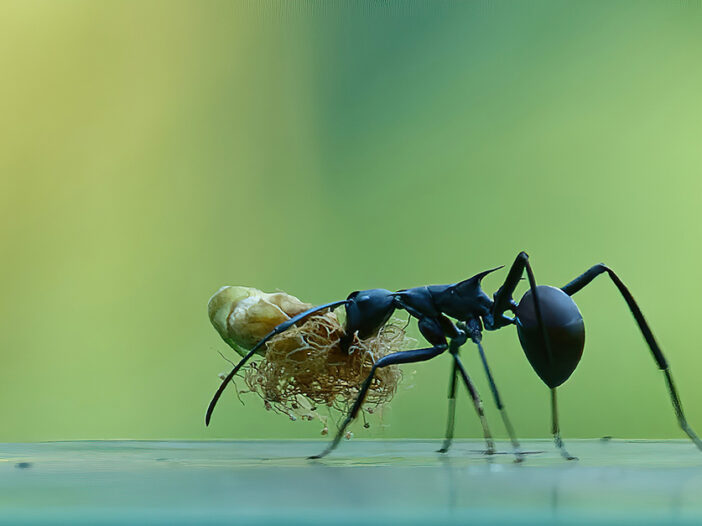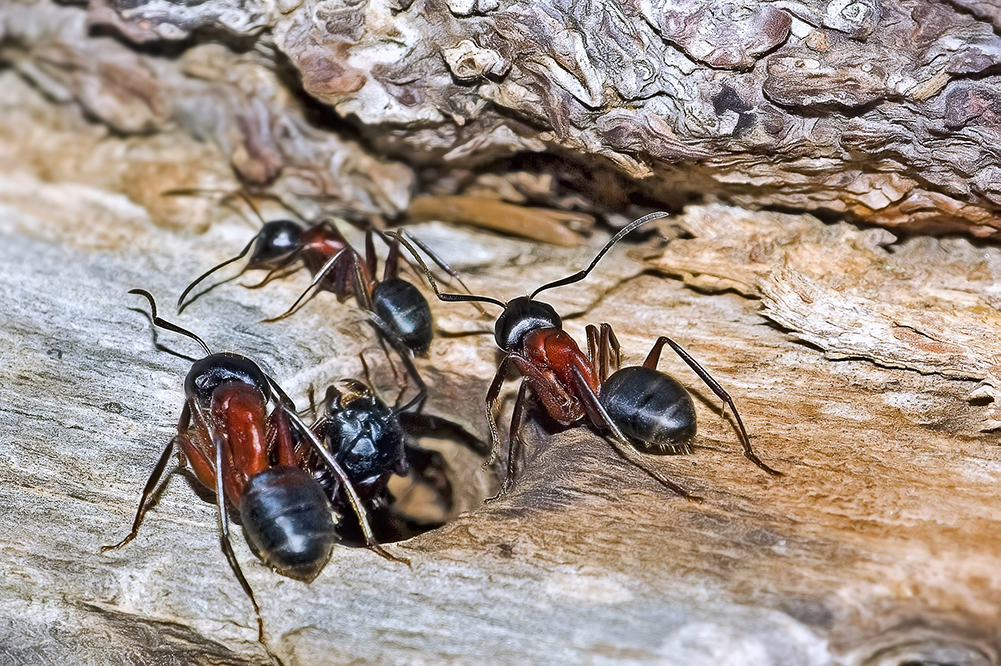
Through no fault of its own, the ant is near the top of the list of uninvited guests whether at the neighborhood picnic or marching through your kitchen. While few people, if any, want to share their space with insects, consider that the ant doesn’t bite, most types don’t destroy your home, and they are a valuable food source for many other critters. At Northwest Pest Control, we believe we have a heart, and we’d like to share some fascinating facts about the lowly ant in the hopes you might temper your hate. However, we’re still available to do what it takes to rid your home of ants if they become bold enough to come inside!
The Pacific Northwest is home to various ant species, each with unique characteristics and behaviors. Here are a few of the most common types of ants found in this region:
- Odorous House Ants (Tapinoma sessile): At just ⅛ inch long, these small, dark brown or black ants like to nest under stones, logs, and mulch. If they find their way indoors tempted by sweets or meats, they prefer nesting in walls, floors, and insulation. Don’t be quick to squash them when you see them as they are known for their strong, rotten coconut-like odor when crushed

- Carpenter Ants (Camponotus spp.): range in size from ¼ to a ½ inch long and can be black, red, or a combination. They prefer to build homes in moist, decaying wood but can invade any trees, logs, or wooden structures because they have an amazing ability to excavate wood. Unfortunately, this can mean if they work their way into your home they can cause structural damage. However, carpenter ants also like to eat dead insects and honeydew from aphids so they may do a bit of cleaning up before they tear into the frame of your house.
- Pavement Ants (Tetramorium caespitum): are similar in size and color to house ants, but they prefer to make their homes in cracks in pavement, sidewalks, and building foundations. These are the ants you see scurrying across your front walk or driveway. They are omnivores that dine on dead insects, but they also like sweets, grease, and seeds, all of which might bring them into your home to see what’s in the pantry.
- Argentine Ants (Linepithema humile): are another small ant at just ⅛ inch long, and they can be light to dark brown. If you see one Argentine ant you can be sure there are more as they are known to form large colonies with multiple queens that can quickly dominate an area. These guys are partial to sugary foods and moist environments, but since they like to nest under buildings and in wall voids, urban areas are attractive places for them to take up residence.
- Thatching Ants (Formica spp.): are one of the larger ant species in this area and range in color from red to black or a mix. When you think of ant mounds, you are probably thinking of thatching ants that build large mound nests from soil, vegetation, and other materials. The good news is these ants are more likely to be found in forests or fields where mound building is easy, and they can enjoy the sunshine. They feed on other insects and organic matter, meaning your home is not as attractive as the great outdoors.
All of these ant species play important roles in their ecosystems, such as soil aeration and predation on other insects. However, if they seek shelter and food in your home, it may be time to remove them from the ecosystem.
One way to remove them is through ant baits and traps. Another solution may be using natural repellents like essential oils. Just be sure to follow the directions carefully to protect the safety of your pets and kids, as well as yourself.
If the infestation is severe and your control strategies aren’t working, call the experts at Northwest Pest Control. We know our way around ants.
Learn more about our services and see how we can help eliminate your ants and ensure they don’t return.